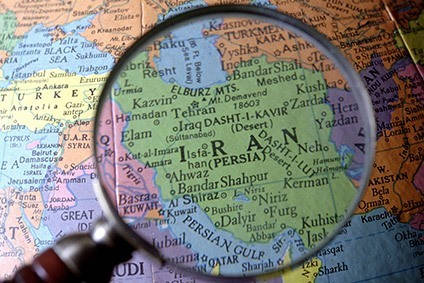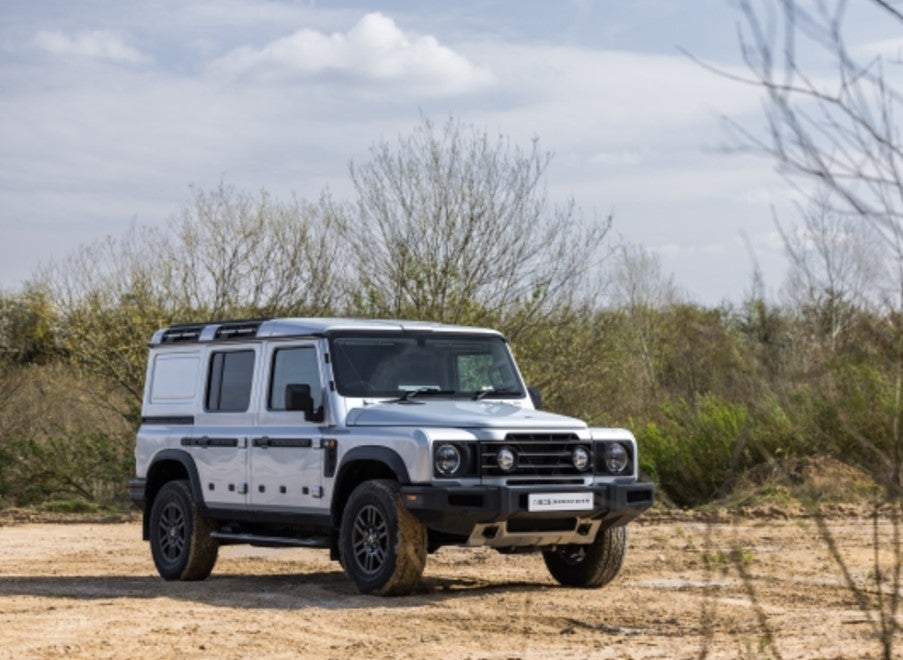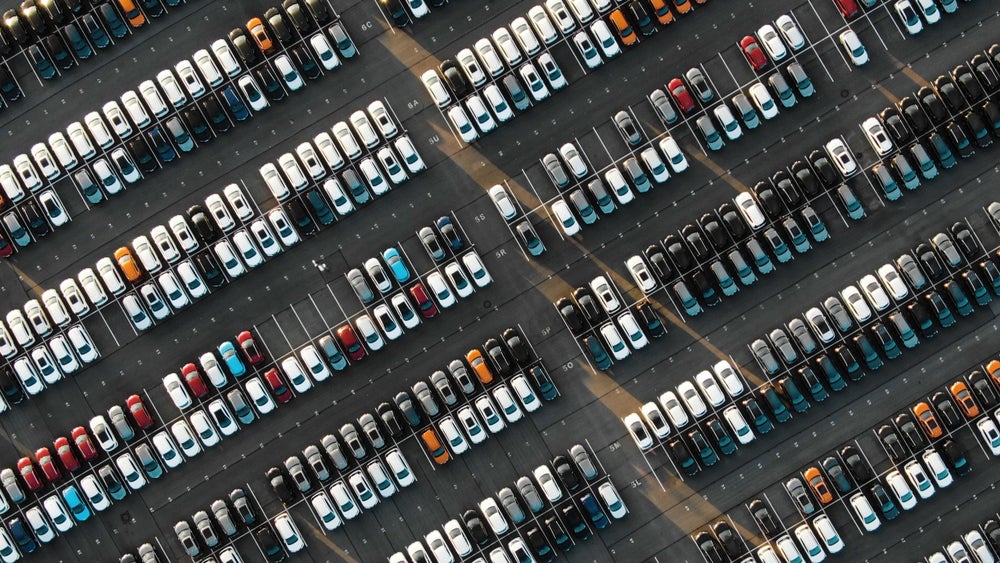
Through a review of seven years of Iranian light vehicle production data, just-auto provides an understanding of the automotive industry’s current situation and identifies trends and opportunities in the sector that are now available. This is the first instalment in March’s management briefing.
With sanctions against Iran recently lifted, there’s been much talk and discussion about the developing opportunity for the automotive industry in Iran. But what sort of market and potential will automotive companies encounter in the country?
According to the World Bank, during the period of sanctions the automotive industry (alongside oil, construction and the financial sector) was one of the most deeply affected industries and these industries are likely to see the most pronounced bounce-back in an economy that was in recession in 2011 and 2012. The automotive sector is the second biggest in Iran, after petrochemicals, and according to the World Bank it accounts for 10% of the economy’s GDP and 700,000 or 4% of its workforce.
Through a review of seven years of Iranian light vehicle production data, just-auto’s providing an understanding of the industry’s current situation and identifies trends and opportunities in the sector that are now available.
As a market, Iran is not insignificant currently, but its industry and market demand has taken a battering due to sanctions. Nevertheless, even with sanctions the market is not to be sniffed at. In 2014, according to OICA data, total market sales – including commercial vehicles – placed the country as the thirteenth largest auto market. At its peak, in 2011, with nearly 1.7 million sales recorded the country ranked as the 11th biggest market in the world. Its size makes it the largest automotive industry in the Middle East and the lifting of sanctions could make it an attractive regional hub.
Due to current high duties, imports of complete cars to the country are limited with 102,000 reported in the last Persian year (ended March 20, 2015) which was 31% up on the prior year. However, the current regime is relaxing tariffs and recently reduced import tariffs for hybrid vehicles to just 4% with imports of hybrids then doubling.
How well do you really know your competitors?
Access the most comprehensive Company Profiles on the market, powered by GlobalData. Save hours of research. Gain competitive edge.

Thank you!
Your download email will arrive shortly
Not ready to buy yet? Download a free sample
We are confident about the unique quality of our Company Profiles. However, we want you to make the most beneficial decision for your business, so we offer a free sample that you can download by submitting the below form
By GlobalDataThe lifting of sanctions has prompted talk of a market worth anywhere between 2 and 3 million vehicles a year, not inconceivable given the country’s population size and years of pent-up demand (car ownership’s reckoned to be about 80-100 cars per 1,000 people compared to around 600 per 1,000 in Europe). Further, the country’s estimated 16.8 million light vehicle parc is ageing with 2.5 million of the parc over 20 years old.
An Iranian market fulfilling its potential at 3 million sales a year would place the country firmly among the world’s ten largest markets. SAIPA, one of Iran’s two primary automakers, told just-auto in April 2015 that, “The Iranian market is a good market and people around the world understand the automotive market is thriving. It will be around 2m or 3m units per annum, they need 2m or 3m cars within a decade. If sanctions are relieved, automakers should think maybe this [is] a sizeable market. All of this need can’t be supplied by automakers in Iran, so some of them should be supplied by imports.”
Further, the French component manufacturers’ association FIEV, told just-auto in January 2016 “I think there is huge potential with Iranian production of cars,” FIEV Club Iran president, Didier Hedin told just-auto from Paris. “The target [is] to reach around 3m cars in 2025 with around 2m in 2020. Two million is good; if you compare in Europe with Spain, France, Italy, UK, it is around this point we are playing.” The targets mentioned by FIEV concur with Iran’s Automotive Vision 2025 with the key points set out below.

Already, established western automakers are looking to seize upon this opportunity. Hours after the lifting of sanctions was formalised in January 2016 – bringing to an end years of negotiations between the P5+1 negotiating group – UK, France, Russia, US, China plus the non-permanent Security Council member, Germany – and Iran, Daimler’s truck division said it would return to the country and signed a letter of intent with Iran Khodro Diesel (IKD) and the Mammut Group.
Just over a week later PSA inked a EUR400m 50:50 joint venture with IKCO, which will see a Tehran facility established to produce 100,000 vehicles per year initially from late in 2017, with volume reportedly set to double later. The vehicles will use 40% local content. The platform of the vehicles – 208, 2008 and 301 – the PF1 will be used by IKCO to develop its own models. PSA estimates the Iran market will regain its 2011 peak by 2018 and reach 2m by 2022.
Furthermore, Renault-Nissan’s chief Carlos Ghosn has stated that the company will be keen to restart operations in the country and elsewhere it’s been reported that FCA’s Fiat division will set up a joint venture with IKCO. Also, delegations from other companies within Germany, Italy, France and Japan are reportedly active in looking to develop post-sanction business relationships.
In mid-February, Japan and Iran signed an investment pact that will focus on automotive and oil opportunities.
Current situation for Iran’s automotive industry
In the Iranian year 1393 (equivalent to 21st March 2014- 20th March 2015) there were a total of 1.1 million light vehicles made in Iran. This performance marked a 52.6% increase on the previous year when just 720,000 were produced. The all-time high for light vehicle production in Iran was in 1390 when just over 1.6 million were produced.

As of 1393, Iran’s light vehicle sector had seven groups manufacturing a combined 1.1 million light vehicles. Iran Khodro and SAIPA dominate the sector taking 91.6% of total production. After IKCO and SAIPA the next largest manufacturer grouping is Kerman which made just 88,000 light vehicles in 1393. IKCO’s production consists of five other locations in Iran other than its central operation in Tehran, which made 375,000 out of IKCO’s total 604,000 output. In 1393 in order of magnitude the subplants were:
- IKCO Khorosan – making 99,000 light vehicles
- IKCO Tabriz – making 91,000 light vehicles
- IKCO Mazandaran – making 25,000
- IKCO Fars – making 13,000
- IKCO Diesel – making just 669 light vehicles, with much of the company’s focus on medium- and heavy-commercial vehicles
SAIPA, which is 48% owned by the state, has an approach that is slightly different to IKCO’s. As well as its own satellite plants outside of its Tehran base it also has controlling stakes in a number of other automakers. Out of its 406,000 light vehicle output in 1393 it made 138,000 at its Tehran hub. Other contributions to its total were made at the following companies and locations:
- Pars Khodro – also Tehran based and the source of 108,000 vehicles. SAIPA’s held 51% of Pars since 2000
- SAIPA Kashan – a new plant at Kashan also made 108,000 light vehicles
- Zamyad – a Tehran based automaker that SAIPA has owned since 1998 made 28,000 light vehicles
- Bonro – the former Parts Industrial Development Foundation (PIDF) plant at Saveh is now part of SAIPA and made just over 21,000 light vehicles in 1393. The plant was established to manufacture Fiat vehicles in the mid-2000s

Besides the various automakers in Iran, it’s estimated that there are anywhere between 1,200 and 2000 suppliers in the country, although the Financial Times reported in 2014 that hundreds had gone to the wall or diversified due to the impact of sanctions on local vehicle production.
Iran’s potential as a regional automotive production hub
Iran has great potential as a regional hub. It can boast of low cost labour and an abundance of raw materials. Not least is a consideration for its 80 million population, of which 64% are under the age of 35, which should have the capability to deliver a 3 million per annum vehicle market. Also, Iran’s proximity to markets that have a combined population of 400 million is also attractive. Changes to Iran’s tax system governing exports have also been made. Up to 50% of taxes are exempt for those exporting 30% of production and in certain cases, starting in 1394, a 100% exemption is allowable.
As a consequence, the deal that IKCO struck with PSA in January 2016 includes a stipulation that at least 30% of the output of the newly-created joint venture must be exported giving Iran the chance to become an export hub. Iran can look to Turkey as a trailblazer in this type of strategy. It has exploited both its custom union with the EU and its proximity to Middle East and African markets to attract investment into its automotive sector.
However, concerns have been raised as to the long-term potential of the PSA deal, which is scheduled to last for 13 years. The products to be produced – 208, 2008 and 301 – are all based on PSA PF1 platform which has been in service since the first generation C3’s introduction in 2001. PF1 is scheduled to be replaced by PSA from 2016, which potentially leaves the Iranian industry once again with an aged technology set if lifecycle investments are not made in the products. Products based on aged technology will have less appeal to surrounding markets and hamper Iranian efforts to become a regional hub.
Analysis of Iran’s OEMs
Iran Khodro: Despite the effect of sanctions on the market IKCO remained very dependent on western branded products for its output in 1393. Together, Peugeot, Renault and Suzuki branded vehicles accounted for 63% of its output with Peugeot taking 61% of output with over 369,000 produced. That it was able to continue Peugeot output was down to parts self-sufficiency and sunken technology as well over two-thirds of its Peugeot output was related to the 405, which was first produced in Europe nearly 30 years ago. The other Peugeot product produced in volume was the 206, itself introduced in Europe nearly 20 years ago. Even newer IKCO branded products, such as the Samand and Runna, rely on PSA technology transfer as they are based on the 405 and 206 respectively.
Alongside, SAIPA’s Pars Khodro affiliate IKCO struck a deal with Renault in the early 2000s to manufacture a local version of the Renault X90 project. The project later became known as the Logan globally and the Iranian version is known as the Tondar90. For all parties concerned, Tondar90 volumes have not met expectations with over 300,000 initially planned a year.

SAIPA: Unlike IKCO, SAIPA was not so dependent on western branded products for its production in 1393. SAIPA’s main volume product is Nasim/Saba which are Saipa-branded versions of the old Kia Pride, which itself was based on a late 1980s Mazda 121. The Nasim/Saba is the singularly most-produced vehicle in Iran.
Apart from the Nasim/Saba, SAIPA’s main external relationships have been with Renault and Nissan over the years. As mentioned, its Pars Khodro subsidiary builds the Tondar90 for Renault, and prior to the tightening of sanctions it had manufactured the Renault Megane from kits. Pars Khodro and its Zamyad affiliate have built various Nissans over the years. The most enduring is the Z24/28 pickup, built under the Zamyad brand, which is a version of the Nissan Junior pickup which Nissan discontinued in the west in 1982. Similarly, Pars has built the Nissan Roniz – a version of the D22 Navara/Frontier – since 2002.

Part two of this briefing examines the outlook for natural gas vehicles in Iran, the strategies of Chinese OEMs in Iran and also market segmentation trends.






